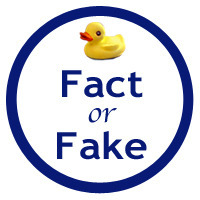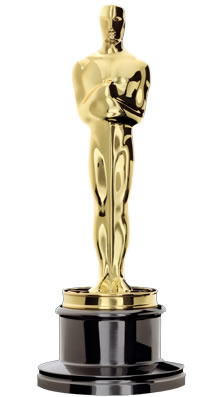Bathroom Readers' Institute's Blog, page 148
February 4, 2014
But How’d They Do Before (And After) They Set the Record?
Do remarkable sports achievements exist in a vacuum?
The Buffalo Bills
 The Bills are the only team to ever make it to four consecutive Super Bowls. However, that achievement is overshadowed by the fact that the Bills also lost all four of those Super Bowls. Only the first one was close, with the Bills losing 20-19 to the New York Giants on a late field goal. But four years in a row from 1990 to 1993, the Bills posted great records (13-3, 13-3, 11-5, and 12-4), then easily defeated every opponent in the playoffs, up until the Super Bowl. The year before the streak, in 1989, the Bills posted a 9-7 record and lost in the first round of the playoffs. The year after the streak, they missed the playoffs entirely. The Bills haven’t been back to a Super Bowl since the streak, and haven’t even made the playoffs since 1999.
The Bills are the only team to ever make it to four consecutive Super Bowls. However, that achievement is overshadowed by the fact that the Bills also lost all four of those Super Bowls. Only the first one was close, with the Bills losing 20-19 to the New York Giants on a late field goal. But four years in a row from 1990 to 1993, the Bills posted great records (13-3, 13-3, 11-5, and 12-4), then easily defeated every opponent in the playoffs, up until the Super Bowl. The year before the streak, in 1989, the Bills posted a 9-7 record and lost in the first round of the playoffs. The year after the streak, they missed the playoffs entirely. The Bills haven’t been back to a Super Bowl since the streak, and haven’t even made the playoffs since 1999.
Wilt Chamberlain
Wilt Chamberlain posted a record that will probably never fall—on March 3, 1962, he scored 100 points in a single game, leading the Philadelphia Warriors to a 169 to 147 win over the New York Knicks. Chamberlain was already a tremendous offensive player. The 100-point game came in his third season—in his first season he scored an average of 37.6 points per game, a record, and in his second season, scored 38.4 points a game, beating his own record. And just three months earlier, Chamberlain had scored 78 points in a game—which had been the record. In the games immediately before and after he scored 100 points, Chamberlain scored a whopping 58 and 61 points, respectively.
Joe DiMaggio
From May 15, 1941 through July 16, 1941, the New York Yankees’ Joe DiMaggio got a hit in 56 consecutive games, a record. It shattered George Sisler’s previous record of 41 games, but consistency was nothing new for DiMaggio. In 1941, DiMaggio was playing in his sixth season, and it was the sixth season he’d been voted to the All-Star Team. He’d already won the World Series four times. In the 1941 season, just prior to the streak, DiMaggio had gone hitless in two games. A few weeks before that, he’d equaled his own record for most games without a hit—a paltry three. On the whole, DiMaggio was already having an excellent season before the 56-game streak, amassing 33 hits in just 28 games.
6 Quick Facts About the Winter Olympics
Prepare for the opening ceremonies this Friday, with some fascinating facts about the Winter Olympics. Have an ice day.
 • The 2014 games are officially known as the XXII Olympic Winter Games. It’s the 22nd edition. The first took place in Chamonix, France, in 1924, just 28 years after the first modern-day Summer Olympics took place in Athens in 1896.
• The 2014 games are officially known as the XXII Olympic Winter Games. It’s the 22nd edition. The first took place in Chamonix, France, in 1924, just 28 years after the first modern-day Summer Olympics took place in Athens in 1896.
• Athletes from just 16 nations showed up to compete in 1924, including the U.S., Canada, Great Britain, Norway, Sweden, and Italy. No nations from Asia or South American were represented. By comparison, the 2010 games in Vancouver drew contenders from 82 countries.
• Newest Winter Olympics events: Skeleton, snowboarding, and curling. Well, sort of. Curling was a part of the 1924 games, but didn’t return until 1998, the same year snowboarding debuted. Skeleton, a single-person event in which athletes sled down a hill face-first at mind-numbing speed, was added in 2002 after brief runs in 1928 and 1948.
• The 1940 Winter Olympics were scheduled to be held in Sapporo, Japan, but were cancelled because of World War II. The same fate befell the 1944 Winter Olympics in Cortina d’Ampezzo, Italy. However both cities eventually got to host a games: Sapporo in 1972, and Cortina d’Ampezzo in 1956.
• First Olympics mascot: “Schuss,” a downhill skier designed for the 1968 Winter Olympics in Grenoble, France. The 2014 Sochi games will have three mascots: “Bely Mishka,” a polar bear, “Zaika,” a hare, and “Barsik,” a snow leopard.
• Sochi isn’t known for its winter weather. The daytime temperatures in the area hit 50 degrees F on average this time of year. Sochi is more of a beach community, seeing as how it’s right next to the Black Sea. Outdoor events will be held at Krasnaya Polyana, a nearby ski resort, but officials are worried that there won’t be enough fresh powder. In order to prevent problems, they’ve been storing 710,000 cubic meters of “used” snow at a nearby facility. They’ve also got 500 “snow guns” that can make artificial snow if necessary.
February 3, 2014
And the Oscar Goes To…Who?
Why were these Academy Award winners and nominees so unlikely?
Because they’d never done any acting before that one big role.
Hudson auditioned for the 2004 season of American Idol, having spent a few months as a singer in a stage show on a cruise ship. She ultimately finished the reality competition in seventh place, but in 2006 she was cast as Effie in the 2006 film adaptation of the Broadway musical Dreamgirls. Playing a founding member of a ‘60s girl group who’s later kicked out of the act, Hudson was cast for her ability to belt out the show’s signature song, “And I Am Telling You I’m Not Going.” It was the first professional acting of Hudson’s life, but the performance won her the Academy Award for Best Supporting Actress.
Dexter Gordon
For his 1950s-set drama about an alcoholic jazz saxophonist, ‘Round Midnight, writer-director Bertrand Tavernier wanted authenticity, and that meant hiring real jazz musicians for the major roles. Pianist Herbie Hancock plays a role (and scored the film), but in the lead role of Dale Turner, Tavernier went against producers’ wishes and cast saxophonist Dexter Gordon, who, apart from a few bit parts playing the saxophone in a handful of foreign films, had never done any acting. For his trouble, Gordon earned an Academy Award nomination for Best Actor in 1987. (He lost to Paul Newman in The Color of Money.)
Catalina Sandino Moreno
After studying advertising at a college in Bogota, Colombia, Catalina Sandino Moreno decided she wanted to be an actress. She enrolled at an acting school right around the time when the filmmakers behind Maria, Full of Grace, a movie about a young woman who becomes a drug mule, put out an open call for the title role. Moreno went to the casting call, and beat out more than 900 other Colombian actresses for the role—her first role, in anything, ever. In 2005, Moreno was nominated for Best Actress at the Academy Awards, the second nomination in history for a role performed in Spanish. (Sandino didn’t win—it was awarded to Hilary Swank for Million Dollar Baby.)
Harold Russell
Russell joined the U.S. Army the day after the attacks on Pearl Harbor. He ultimately became an instructor, and while training in North Carolina in 1944, he handled a defective explosive, which blew up in his hands. Both of Russell’s hands had to be amputated and replaced with hooks. After his discharge, he attended Boston University and starred in an Army training film about the struggles of World War II veterans. Around the same time, acclaimed director William Wyler (Mrs. Miniver, Wuthering Heights) was preparing The Best Years of Our Lives, about World War II veterans trying, to readjust to civilian life. Wyler talked Russell into co-starring as Homer, a sailor who had lost both his hands in combat. To honor Russell, the Academy gave Russell an honorary Oscar for “bringing hope and courage” to veterans. And then, surprisingly, Russell also won the award for Best Supporting Actor. It’s the only time an actor—and a non-professional one at that—won two Oscars for the same role.
The Official Toilets of the 2014 Winter Olympic Games
You’d better not be bashful if you’re planning to attend the Winter Olympics in Sochi.
Going to the bathroom will practically be a team event in and of itself.
 Recently, BBC correspondent Steve Rosenberg took a tour of The Laura Cross-Country Ski and Biathlon Center, one of the venues that will be used during this year’s Winter Olympics in Sochi, Russia. He went to use the men’s room and was surprised by what he found inside. In addition to a sink and a paper towel dispenser, not unlike the ones you’d find in any of a million restrooms around the world, Rosenberg discovered two potties sitting side-by-side.
Recently, BBC correspondent Steve Rosenberg took a tour of The Laura Cross-Country Ski and Biathlon Center, one of the venues that will be used during this year’s Winter Olympics in Sochi, Russia. He went to use the men’s room and was surprised by what he found inside. In addition to a sink and a paper towel dispenser, not unlike the ones you’d find in any of a million restrooms around the world, Rosenberg discovered two potties sitting side-by-side.
The tandem toilets were separated by a small trash can instead of a wall. Even weirder, there was only a single roll of TP and it was within reach of just one of them. Rosenberg snapped a photo of the crazy commodes and published it on his Twitter account. His followers offered their thoughts. Some theorized that the toilets were a sign of Russian corruption—corners cut by organizers—or simply a blunder.
Shortly afterward, a reporter for the Associated Press decided to investigate. They pointed out that bathrooms like this are commonplace in Russia and that dual toilets can be found everywhere from courthouses to schools. Vasily Konov, an editor for R-Sport, wrote, “Why are the BBC folks scaring us?” he wrote. “This is what the gents [men’s room] look like at football stadiums in Russia.”
January 31, 2014
But What’s On After the Super Bowl?
After spending six hours on the pregame, the game, and the postgame, what’s the best way to unwind after a long day of watching TV? Watching more TV!
 • In the early years of the Super Bowl, the game was played and broadcast earlier in the day, not in primetime. Nor was it the TV event or near-holiday it is today. Now the game coverage ends around 10:30 p.m. eastern time, and subsequently earlier in the western time zones. This gives the network airing it (it rotates among the Big 4 broadcast channels each year) an ample opportunity to present a new show or expose an existing show to a potentially huge audience. The concept began in earnest in 1984, when NBC used its post-Super Bowl advantage to help launch The A-Team.
• In the early years of the Super Bowl, the game was played and broadcast earlier in the day, not in primetime. Nor was it the TV event or near-holiday it is today. Now the game coverage ends around 10:30 p.m. eastern time, and subsequently earlier in the western time zones. This gives the network airing it (it rotates among the Big 4 broadcast channels each year) an ample opportunity to present a new show or expose an existing show to a potentially huge audience. The concept began in earnest in 1984, when NBC used its post-Super Bowl advantage to help launch The A-Team.
• The most-watched post show was Friends in 1996. More than 52 million viewers stayed on after the Super Bowl to watch an episode with guest stars Julia Roberts, Brooke Shields, and Jean-Claude Van Damme.
• The least-watched post-game show of the past few years was CBS’s Elementary, in 2013. The Sherlock Holmes show suffered because it didn’t begin airing until 11:11 p.m.—game coverage had gone extra-long because of a mid-game stadium blackout.
• The show that’s aired after the most Super Bowls: 60 Minutes. The most famous installment occurred in 1992, when the show aired a special 13-minute edition consisting entirely of an interview with presidential candidate Bill Clinton, and his wife, Hillary Clinton, responding to rumors that the former Arkansas governor had had an extramarital affair.
• Among the long-running TV series that debuted immediately after a Super Bowl: The Wonder Years (1988), Family Guy (1999), Jimmy Kimmel Live (2003), and Undercover Boss (2010)
• Not every show with a post-Super Bowl slot went on to become a TV classic or enjoy a long run. Among the shows that launched in that prime spot that were cancelled after less than a year:
-The Last Precinct (1986), an NBC sitcom starring Adam West as the captain of an inept group of police officers
-MacGruder and Loud (1985), an ABC police drama about two cops that had to keep their marriage a secret
-The Good Life (1994) an NBC family sitcom co-starring Drew Carey
-Extreme (1995), an ABC action show starring James Brolin as a search-and-rescue operative.
Fact-or-Fake Friday or Fight!
 Here are three weird news items from the past few weeks. Two of them are true, and one of them we just made up. Take a guess, and check the answers below to see if you’re right.
Here are three weird news items from the past few weeks. Two of them are true, and one of them we just made up. Take a guess, and check the answers below to see if you’re right.
A.
The manufacturers of the Flushmate III toilet peripheral are ordering a recall due to the risk of…explosions. There are reports that the high-tech flushing mechanism erupted so violently so as to blow apart the tank or rip the lid off the top of the toilet. There have been no injuries as of yet, but the Consumer Product Safety Commission reports the recall is underway in the U.S. and Canada for a certain run of units, which were manufactured between March 2008 and June 2009. If you have a Flushmate III installed on your commode, it’s recommended to stop using the toilet right away, then turn off the water supply, and give it one last flush to “relieve pressure.”
B.
Stop us if you’ve heard this one: 51-year-old David Sherratt walked into a U.K. bar naked from the waist down and carrying a bag of adult toys and announced that if anyone had a problem with his outfit they could take it outside. No one in the White Hart bar took him up on the offer to fight, so he left. But when the bartender saw that he’d approached a group of pedestrians outside, he called the police. When the cops apprehended Sherratt, they found that in addition to the toys, the bag he was carrying also included amphetamines, which he said he “may have taken too much” of. He has been sentenced to a 12-month community order and to pay an 85-pound fine.
C.
A vast collection of rare pornographic photographs is scheduled to go up for auction that was once owned by the Swedish director Ingmar Bergman. The online-only auction, planned for Feb. 6, will benefit the estate of Ingmar Bergman, which is now operates as a nonprofit artists’ retreat on the Baltic island of Fårö. Bergman’s daughter, Linn Ullmann, said the photographs were part of the director’s extensive art collection, and the sale would help preserve Bergman’s legacy as an artist. The nearly 2,000 photos are expected to bring in anywhere from $200,000 to $500,000.
Want more fakes? Check out Uncle John’s Fake Facts. (Really!)
January 30, 2014
Evolution of the Super Bowl Halftime Show
More than 40 years after the first Super Bowl broadcast, the halftime show is no longer just something to fill TV airtime while the football players rest—it’s now a spectacle unto itself.
 1967: Marching bands from the universities of Arizona and Michigan perform.
1967: Marching bands from the universities of Arizona and Michigan perform.
1970: The NFL experiments with big-name celebrity halftime entertainers. Their first big star: Carol Channing.
1972: “A Salute to Louis Armstrong,” with Ella Fitzgerald, Al Hirt, the U.S. Marine Corps Drill Team…and Carol Channing. Armstrong had died the previous summer. Songs included “High Society” and “Hello, Dolly.”
1976: Up with People, a “clean-cut” troupe of young dancers and singers, kicks off the yearlong American bicentennial celebration with a collection of patriotic songs called “200 Years and Just a Baby.”
1980: Up with People returns with a “Salute to the Big Band Era.”
1982: Up with People returns with a “Salute to the ‘60s.”
1986: Up With People returns with “The Beat of the Future,” ironically their last Super Bowl appearance.
1988: Chubby Checker sings “The Super Bowl Twist” while the Rockettes dance on a giant grand piano–shaped stage. The rest of the field is filled with 88 grand pianos. The occasion: it’s 1988.
1990: “A Salute to New Orleans and Snoopy’s 40th Birthday,” combines New Orleans musicians (clarinetist Pete Fountain, Cajun fiddler Doug Kershaw, and blues singer Irma Thomas) with 400 dancers, a 500-voice choir, marching bands from three Louisiana colleges, and actors dressed up like characters from the “Peanuts” comic strip.
1992: To promote the upcoming Winter Olympics (to be broadcast, like the 1992 Super Bowl, on CBS), Brian Boitano and Dorothy Hamill figure skate while Gloria Estefan sings a song called “Pump It Up, Frosty.”
1993: Michael Jackson sings “Heal the World,” accompanied by a choir of 3,500 children.
1995: Disney produces the halftime show, which they use to promote a new Indiana Jones–themed ride at Disneyland with an Indiana Jones–themed show featuring Patti LaBelle, Tony Bennett, Arturo Sandoval, Miami Sound Machine, and 1,000 dancers.
2004: Justin Timberlake and Janet Jackson play Timberlake’s hit “Rock Your Body.” Jackson’s “wardrobe malfunction” introduces a new phrase into the lexicon.
2005: Paul McCartney sings “Drive My Car,” “Get Back,” “Live and Let Die,” and “Hey Jude” (without lip-synching or exposing himself). This ushers in a new era in halftime performers: well-known rock and pop superstars performing a medley of their hits. In the years since, performers have included the Rolling Stones, Prince, Tom Petty, Bruce Springsteen, the Who, Madonna, and this year, the Red Hot Chili Peppers.
Impossible Questions: Silly Stumpers Edition (Answers)
Got your guesses ready? Let’s check and see how you did.
What do My Big Fat Greek Wedding, Alvin and the Chipmunks: The Squeakquel, and World War Z have in common?
They’re among the highest-grossing movies of all time…that never topped the weekly box office. My Big Fat Greek Wedding made $241 million, Squeakwel made $219, and Z made $202, but each did so slowly, over time, without a big, dominant first week where moviegoers rushed to theaters. Greek was a sleeper hit and stayed in theaters for a year. It’s most successful weekend was a $14.8 million take, on its 22nd weekend. Alvin opened on Christmas 2009, and finished third behind Avatar and Sherlock Holmes. World War Z opened on June 21, 2012, the same day as Monsters University.
What sets Charlemagne apart from other historical world leaders?
Unlike Richard Nixon, Genghis Khan, Queen Elizabeth and all the others, the Roman emperor Charlemagne may have never existed. At least that’s according to some out-there historians. In 1996, Herberg Illig published his theory of “phantom time hypothesis.” Illig claims that in 1582, Pope Gregory XIII introduced the Gregorian calendar (the one we use today) to replace the Julian calendar. And while a 10-day discrepancy between the two was noted, mathematicians inadvertently added 300 years. That period spans the 800s, which includes the reign of Charlemagne. As for all the records of Charlemagne? Illig says those were falsified to cover up the mistake.
Want more impossible questions? Check out Uncle John’s Impossible Questions.
January 29, 2014
Quick Facts About Super Bowl Commercials
Admit it: You only watch the game for the ads.
Here are some facts about Super Bowl commercials.
 • Since 1989, USA Today’s Super Bowl Ad Meter has tracked which of the game’s commercials most resonated with viewers. Once done with focus groups during the game, voting is now conducted online in real time. Some past winners include Diet Pepsi’s 1991 commercial with Ray Charles singing “You Got the Right One Baby,” and a 1992 Nike ad in which Michael Jordan and Bugs Bunny play a basketball game on Mars against Marvin the Martian (which directly inspired the 1996 movie Space Jam). From 1999 to 2008, a commercial for Budweiser of Bud Light took the Ad meter honors.
• Since 1989, USA Today’s Super Bowl Ad Meter has tracked which of the game’s commercials most resonated with viewers. Once done with focus groups during the game, voting is now conducted online in real time. Some past winners include Diet Pepsi’s 1991 commercial with Ray Charles singing “You Got the Right One Baby,” and a 1992 Nike ad in which Michael Jordan and Bugs Bunny play a basketball game on Mars against Marvin the Martian (which directly inspired the 1996 movie Space Jam). From 1999 to 2008, a commercial for Budweiser of Bud Light took the Ad meter honors.
• Throughout the ‘90s, Budweiser aired a series of stop-motion animated commercials throughout each Super Bowl depicting the Bud Bowl, a football game between a squad of Budweiser bottles and a squad of Bud Light bottles. Unlike a lot of Super Bowls, the games were always close. Over the course of eight Bud Bowls, Budweiser won six contests, and Bud Light just two.
• The Super Bowl is almost always the most watched TV program of the year, attracting as many as 110 million viewers. That means the networks can charge exorbitant advertising rates. For Super Bowl I in 1967, a 30-second spot cost $42,000, or $285,000 in today’s money. A spot was up to $324,000 by 1982, and hit $1.1 million in 1995. Ad space in this year’s game: about $4 million.
• One commercial produced for this year’s Super Bowl was too controversial to air. Sex? Violence? Nope. Fox won’t air home soda maker SodaStream’s commercial because spokesperson Scarlett Johansson specifically mentions the competition. “Sorry Coke and Pepsi,” Johansson says as she sips a homemade soda. SodaStream CEO Daniel Birnbaum believes the ad was banned because Fox doesn’t want to upset Coke and Pepsi, two huge advertisers on the network.
• Oddly, this isn’t the first time SodaStream has had a Super Bowl commercial rejected. Last year, the company’s Super Bowl commercial depicted trucks full of Coke and Pepsi products exploding in the wake of a person using a SodaStream. CBS wouldn’t air it…because it directly attacked Coke and Pepsi by name. Instead, the network aired a modified version: There were lots of exploding bottles still, just no mention of Coke or Pepsi.
Impossible Questions: Silly Stumpers Edition
 You know what to do: try and come up with a solution to these tricky questions, then come tomorrow and see if you’re right.
You know what to do: try and come up with a solution to these tricky questions, then come tomorrow and see if you’re right.
What do My Big Fat Greek Wedding, Alvin and the Chipmunks: The Squeakquel, and World War Z have in common?
What sets Charlemagne apart from other historical world leaders?
Want more impossible questions? Check out Uncle John’s Impossible Questions.




